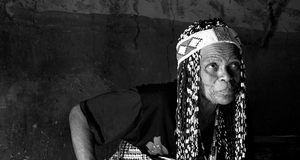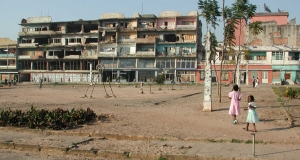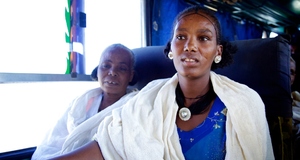From the FieldBoda Boda: The Impact of Motorbike Taxi Service in Rural Uganda
By
2014, Vol. 6 No. 11 | pg. 5/5 | « 6. ConclusionThe widespread development of motorcycle taxis system in southern Uganda is changing the mobility habits of the rural populations. The need for a reliable and effective transportation system is increasingly met by an organization of young men called Boda Boda. The present work investigated how and to what extent, the Boda Boda system affects two isolated rural communities located in Kabale district, in southwestern Uganda. This study indicates how the Boda Boda interacts directly in the participatory processes of the population of the two villages and, more precisely, shows how the service is utilized as a fundamental tool for improving social interaction which is a key element of the welfare shared in the area. It also shows that access to health through the transport system is subordinate to economic activities. I have also presented how the Boda Boda service is utilized to maintain and foster social relations which are considered the only available insurance against the challenges of the future. Mobility in this area as suggested by Bryceson (2003 p.183) is dictated by the already established population activities. This research, even though confirming those assumptions, proposes a further analysis. In every area of the world there are different cultural frameworks which define which activities are worthy in order to pursue personal welfare. Moreover, those decisions are often affected by socio economic constrains which force rural populations to make choices that do not seem to be appropriate for the economic context of the area. In south rural Uganda, it is not the possibility of reaching the marketplace, or having access to health facilities which influences the choice for mobility; it is the need for social interaction, an activity which is engrained in the local culture that impacts the choice for mobility. The Boda Boda transportation system is an important element for the achievement of the local need for social relations.As stated by Sen, the interaction among communities is the first step to reach the necessary, but not sufficient, freedom to ignite the process to foster development. The Boda Boda phenomenon, while providing a service which is perceived as valuable by the population, might become an element that has to be accounted for, in order to contrast the assumptions of the common development economic literature. Scholars have shown that road infrastructure investments are not fundamental for the development of remote rural areas in poor countries; it has been also written that the transportation system is, generally only a tool for enhancing the already established socio economic activities. It must be noticed, however, that during the years the development of the Boda Boda transportation systems allowed rural and remote population to get in contact with a broader social and economic network and, more importantly, it is reasonable to assume that in the future it will allow those populations to have access to a larger amount of information. Remote populations with the possibility to get in touch with different realities compared to the one in their villages might recognize that better road infrastructure is important. They might decide that their welfare depends upon the strengthened Boda Boda transportation system. They might realize that mobility free from every exogenous constraint is itself development. The opportunity to have different options from forced mobility which Lovisolo defines as “…un fenomeno diffuso che si configura come un esodo rurale da ambienti poveri e…pone problemi complessi di urbanizzazione”12 (Lovisolo 2006, p.12) can be key for development. The utilization of a transportation system which freely permits the access to a larger amount of ideas might become an element which will allow populations to decide what their future should look like. AcknowledgmentsI wish to express my appreciation to all those who have supported and assisted me during my research journey. Professor Graboyes, who always challenged me to find the most hidden reasons for all the behaviors I observed in Uganda. She pushed me to think beyond banality. Professor Burlando, who, always found the time to answer every econometric question I had, including the most annoying. He taught me to think logically about data. I also want to thank my collaborators in collecting the data in Uganda. Constructor Engineer Godfrey Ndibarema who, with his jokes, always kept me in good mood and Professor Margret Twabaze who with her wisdom always kept me calm. Thank you. A special final thank goes to my wife Olivia. She endured me for 8 months. I would not be here without her. ReferencesBorgonovi, E. (2006). Welfare: Un modello da ripensare. Atlantide, 2, 25-31. Bryceson, D.F., Mbara, T.C., Maunder, D. (2003). Livelihoods, daily mobility and poverty in sub-Saharan Africa. Transport Reviews, 23, 177-196. Cameron, C., & Trivedi, P.K. (1999). Essential of Count Data Regression. Retrieved from University of California Davis. Unpublished. Chamberlin, J., Muluget T., Benson, T., Samia Z. 2007. An Atlas of the Ethiopian Rural Economy: Expanding the Range of Available Information for Development Planning. Information Development 23 (2–3), 181–92. Chambers, R. (2008). Revolutions in Development Inquiry. Sterling, VA: Earthscan. Cohen, J., & Dupas, P. (2010). Free distribution or cost-sharing? Evidence from a randomized malaria prevention experiment. The Quarterly Journal of Economics. 75-1, 1-45. Deininger, K. & Okidi, J. (2003). Growth and Poverty Reduction in Uganda, 1999– 2000: Panel Data Evidence. Development Policy Review 21 (4), 481-509. Dercon, S. & Hoddinott, J. (2005). Livelihoods, Growth, and Links to Market Towns in 15 Ethiopian Villages. Food and Consumption and Nutrition Division. Discussion Paper 194, International Food Policy Research Institute. Devarajan, S., Easterly, W. R., Pack, H. (2003). Low Investment Is Not the Constraint on African Development. Economic Development And Cultural Change, 51(3), 547-571. Ellis, F., 2000. Rural Livelihoods and Diversity in Developing Countries . Oxford: Oxford University Press. Ellis, S., & Hine, J. (1998). The Provision of Rural Transport Services: Approach Paper. Sub-Saharan Africa Transport Policy Program Document 37, World Bank. Fan, S., & Hazell, p. (2001). Returns to Public Investments in the Less-Favored Areas of India and China. American Journal of Agricultural Economics 83 (5), 1217–22. Fan, S., Zhang, X., Rao, N. (2004). Public Expenditure, Growth, and Poverty Reduction in Rural Uganda. DSGD Discussion Paper 4, International Food Policy Research Institute. Heidegger, M. (1959). Discourse on Thinking. A Translation of Gelassenheit. New York, NY: Harper & Row, Publishers. Howe, J. (2003). Filling the middle: Uganda’s appropriate transport services. Transport Reviews, 23, 161-176. Hu, A. L., & Liu, D. M. (2011). Research on Influencing Factors of Welfare Level about Left-behind Children in China Rural Areas. Journal of Agricultural Science. Vol 3 (2). L’Indro. (5 September 2013). Online newspaper. Lipton, M. (1977). Why poor people stay poor: A study of urban bias in world development. Cambridge: Harvard University Press. Lovisolo, F., & Vitale, S. (2006). Poverta’, sviluppo e mobilita’ rurale in Africa occidentale. Working Paper 13. Politecnico di Torino. National Development Plan 2010-11 2014-15. Raballand, G., Macchi, P., Merotto, D., Petracco, C. (2009). Revising the road investment strategy in rural areas: An application for Uganda. Policy Research Working Paper, 5036, 1-79. Sen, A. (1999). Development as Freedom. New York, NY: Alfred A. Knopf, Inc. SSenkaaba, S. (10 May 2014) Boda Bodas: A deathtrap at your beckon. New Vision. Retrieved from http://www.newvsion.co.ug/ Stifel, D., & Minten, B. (2008). Isolation and Agricultural Productivity. Agricultural Economics 39 (1), 1–15. UBOS. (2013). Statistical Abstract 2012. Warr, P. (2005). Road Development and Poverty Reduction: The Case of Lao PDR.” ADB Institute Research Paper Series no. 64, Asian Development Bank. Endnotes1.) “becoming the fundamental function of the institutional expression of the society” 2.) Distances are calculated in hours on foot 3.) Prices are in thousands of Ugandan Shillings 4.) Distances are in hours on foot 5.) Prices are in thousands of Ugandan Shillings 6.) Distances are in hours on foot 7.) Prices are in thousands of Ugandan Shillings 8.) Distances are in hours on foot 9.) Prices are in thousands of Ugandan Shillings 10.) Distances are in hours on foot 11.) Prices are in thousands of Ugandan Shillings 12.) “ a widespread phenomenon which resembles a rural migration from a poor environment…and creates complex urbanization problems” Suggested Reading from Inquiries Journal
Inquiries Journal provides undergraduate and graduate students around the world a platform for the wide dissemination of academic work over a range of core disciplines. Representing the work of students from hundreds of institutions around the globe, Inquiries Journal's large database of academic articles is completely free. Learn more | Blog | Submit Latest in Economics |


















